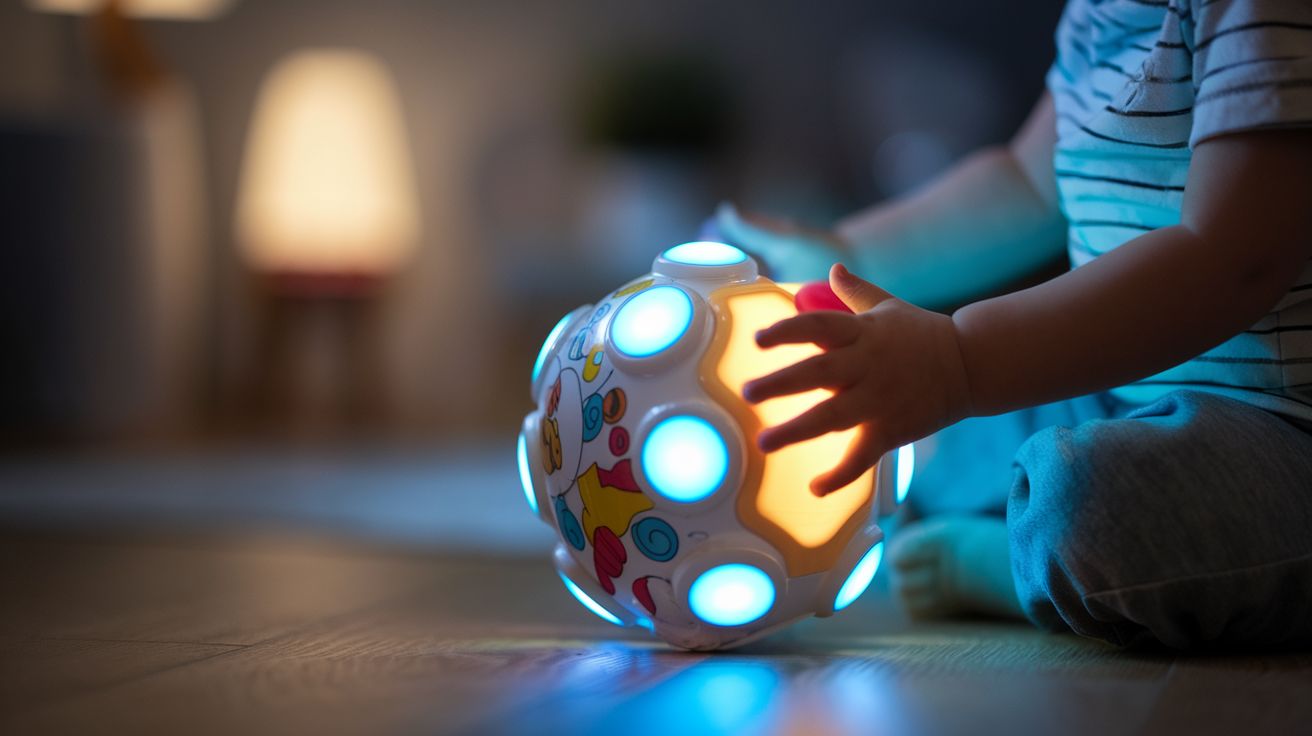Follow us on Google News (click on ☆)
Since 2020, a new European standard has governed luminous toys. However, recent tests on toys incorporating LEDs reveal that this revision is insufficient. Some products on the market exceed visual safety thresholds.

Children are more vulnerable to blue light because their eyes have not yet developed effective protection. Studies show that this exposure can damage the retina and disrupt their sleep.
Anses had already raised the alarm in 2010 and 2019. Research shows that blue light could cause long-term eye diseases, such as age-related macular degeneration (AMD).
According to the agency, methodological errors in the 2020 standard calculations are the source of the issue. The protocol based on usage scenarios of LED toys is not strict enough.
After testing 19 commercially available toys, Anses concluded that the previous standard, from 2005, was much more protective. They therefore recommend a temporary return to this version while awaiting a complete revision.
Until this update is made, Anses advises parents to limit the use of luminous toys two hours before bedtime. This could help preserve children's sleep and visual health. Moving forward, the challenge is clear: ensuring that each toy incorporating LEDs will meet stricter safety criteria to avoid any future ocular risks.
What is blue light and why is it dangerous?
Light-emitting diodes (LEDs) emit white light that contains a high proportion of blue light, necessary for their operation, but this light presents significant risks to eye health, especially in children. Their developing lens does not filter this light effectively, exposing them to toxic stress on the retina. This stress can cause irreversible damage, increasing the risk of age-related macular degeneration (AMD).
Compared to traditional lighting, LEDs produce luminance levels up to 1,000 times higher, which increases the risk of glare. In addition to retinal hazards, these light sources can induce visual discomfort due to their highly focused and intense illumination.
Children, already vulnerable to blue light, are particularly sensitive to the effects of LEDs used in objects such as toys, flashlights, or car headlights, which often emit significant amounts of blue light. Besides phototoxicity, exposure to this light in the evening or at night disrupts circadian rhythms, altering sleep quality.
What specific risks do children face?
Here are some examples of the risks children may face with prolonged exposure to blue light:
- Retinal damage: Prolonged exposure to blue light can cause irreversible lesions on the retina, increasing the risk of age-related macular degeneration (AMD), a disease that affects central vision in the long term.
- Disruption of biological rhythms: Blue light inhibits the production of melatonin, the sleep hormone. This disrupts children's circadian rhythms, delaying sleep onset and impairing sleep quality, especially when they are exposed to luminous toys in the evening.
- Visual fatigue: Repeated exposure to blue light, even at low intensity, can cause eye strain, characterized by symptoms such as headaches, dry eyes, and blurred vision.